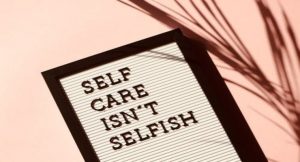Learned helplessness is a concept that has been around for some time. After working with many clients who exhibit depressive and or anxious symptoms, I began to see that many folks, to some degree, describe feeling helpless, making it difficult for them to live a productive, meaningful life and leaving them feeling “less than,” unmotivated, and stuck.
While learned helplessness affects many people, it is especially common in those who have a history of trauma or neglect.
So what exactly is learned helplessness? Basically, it means if someone is in a negative situation for long enough and they cannot change that situation, they may “learn” to be helpless. Many times, children and adults who are in an abusive or neglectful environment do not have control over their situation. Due to the pervasiveness of this unhealthy environment, they may adopt a view of the world or themselves that communicates, “I cannot change this,” “I cannot do anything about this,” “No one can help me,” or other self-defeating beliefs. While learned helplessness develops as a means of survival, once the person is out of their negative environment, the behaviors and beliefs tend not to change and they become stuck in a cycle of depression, anxiety, or decreased quality of life.
Typically, learned helplessness is not a concept at the forefront of people’s minds. We don’t walk about thinking that we’re living our lives helplessly. Unaware of this dynamic, we tend not to question our beliefs and therefore don’t address them.
If learned helplessness seems like a concept you can relate to, read on! It’s possible to change your negative outlook into something helpful and positive:
Step 1: Examine your past
A great place to start making this change, perhaps in therapy, would be to look at your history. What was your childhood like? Did you experience abuse or neglect when you were younger? Did you experience trauma or neglect as an adult? Did you—or do you—feel as though you were stuck and unable to make changes? How did you deal with this? If you answered yes to a couple of these questions, you most likely began to create views of yourself and the world that may keep you stuck now.
Step 2: Explore resulting thoughts, feelings, and behaviors
After you have identified difficulties in the past that contributed to learned helplessness, you can sift through the thoughts, feelings, and behaviors that developed as a means of survival but that now get in the way of making changes in your life. You may perhaps do this with a therapist, trusted friend, or family member, or even write out your story or do a timeline.
Step 3: Challenge your beliefs
After your awareness has increased, you can begin to challenge your old beliefs, by asking questions such as:
- What are the advantages and disadvantages of thinking this way?
- Am I condemning myself as a person on the basis of past events
- Do I expect myself to be perfect, and if so, how?
- Am I overestimating the chances of disaster?
The key here is to ask different questions and create some doubt in our old thinking and behavior patterns.
Step 4: Shift from learned helplessness into learned optimism
Those who struggle with learned helplessness tend to be pessimistic and have a general negative outlook on life. Again, the pessimism was most likely created out of survival, but as we know, it tends to become unhelpful over time. The best way to transition from learned helplessness to learned optimism is to shift from negative beliefs toward more positive or realistic ones. Studies show that people who naturally are more optimistic tend to feel a greater sense of control over their lives, which is empowering. They may feel as though they can make changes that will last and are more motivated to take steps toward change. They believe in themselves more and are more resilient when they do not succeed the first, second, or even 20th time.
Here are some key concepts to help in that shift from learned helplessness into learned optimism:
- Learn to see your situation as temporary rather than permanent.
- Refrain from taking things personally.
- Try to not overgeneralize failures or setbacks into other areas in your life.
While making change is always challenging, with some persistence in using these strategies, you will be on the road to overcoming learned helplessness, shift into learned optimism, and begin to feel a greater level of motivation; mastery of your thoughts, feelings, and behaviors; and improved mood.



